The Anaesthesia Newsletter December 2021
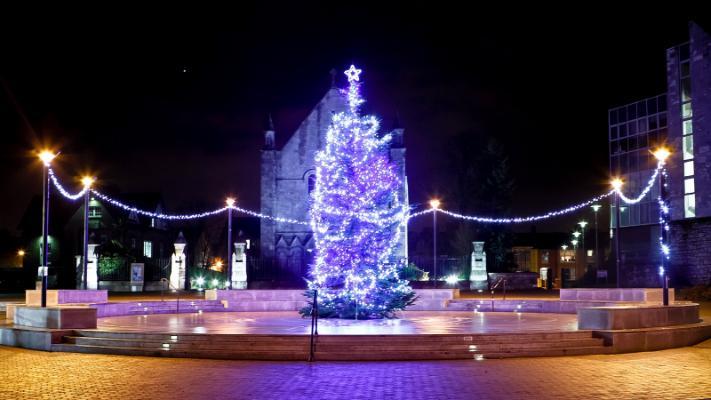
December is traditionally a time for reflection, and this year has certainly been a particularly challenging one for Irish healthcare workers. The year started and ended with waves of the COVID pandemic, with a cyber-attack sandwiched in the middle. Great credit is due to all healthcare staff who have shown such courage, skill and compassion while caring for patients and our community. We have included the poem “These are the hands” by Michael Rosen at the end of this newsletter as a tribute.
Doctors in Training have faced particular challenges this year with an increased workload and altered training opportunities. The usual difficulties such as finding accommodation, child-care, and isolation from support systems have been accentuated due to the pandemic. Many colleagues from overseas have had additional anxieties about vulnerable and ill family members back home, paired with difficulties in international travel. We wish to thank the Doctors in Training for their hard work, professionalism, and camaraderie throughout the year.
It is appropriate that we focus on Doctors in Training in the December Newsletter. Dr Gilly de Loughry, SAT2, has submitted a focus segment outlining the excellent work of the Committee of Anaesthesiology Trainees (CAT). Gilly is the Examinations Representative and Liaison Anaesthetic Trainee Co-ordinator. Dr Sarah Galea, SAT2 and Liaison Anaesthesiology Trainee for the CUH, has contributed to the Meet the Team segment.
Oonagh Hickey, Consultant Anaesthesiologist, CUH (in the green hat)
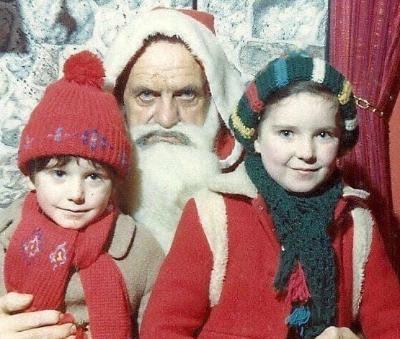
We also have festive references to dinosaurs, the Napoleonic Wars, the usual photos of buns, and some baby photos.
Finally, on behalf of Eoin and myself, we would like to thank everyone who supported the UCC Anaesthesiology Newsletter this year, especially Mr Niall O’Brien, UCC Research Assistant, for his IT wizardry. We hope that this platform can contribute to a sense of community in this time of social distancing and increased isolation. We welcome contributions from colleagues within and from outside the region. We extend a special “G’day” to our readers in Australia and New Zealand. In January, we will have a sporty start to the year when we focus on the athletic achievements of our colleagues.
In the meantime, we hope that you will manage to get some well-deserved time with your families, and good luck to those changing jobs/cities/countries. We wish you all good health and happiness in the new year.
Spotlight section:
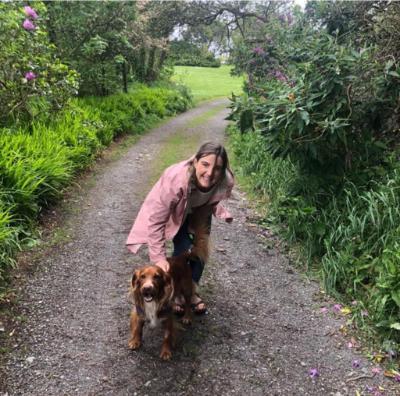
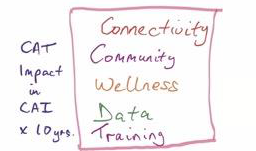
The Committee of Anaesthesiology Trainees, College of Anaesthesiologists of Ireland
Dr Gilly de Loughry, SAT2, CUH; Examinations Representative and Liaison Anaesthesiology Trainee Co-ordinator, Committee of Anaesthesiology Trainees. (Photo: Gilly with Rousso, a Very Good Boy)
My name is Gilly de Loughry and I’m currently living in my adopted home of Cork working as a SAT2 trainee in the CUH. This is my first year on the Committee of Anaesthesiology Trainees, also known more informally as the CAT. The CAT provides a focus and a channel for the interests of trainees. The elected committee members serve to represent anaesthesiology trainees in the College Anaesthesiologists of Ireland (CAI) and on relevant national committees. The CATs main objective is to influence connectivity, community, and wellness amongst trainees, to collect data on our training and use this to improve training in the short and long-term.
I am very lucky to be on the committee with eleven other excellent trainees, who all bring their experience and enthusiasm to the table to help advocate for trainees on the many sub-committees ranging from exams and training to sustainability and wellbeing. We also have seats on the National Doctors Training Planning/Forum of Irish Postgraduate Medical Training Bodies committee and have a HSE liaison representative. The CAT aims to have a holistic approach to trainee issues and these wide range of sub-committees serve to support and guide trainees as we navigate our training and the internal and external factors that influence it. Helping us to enact change and to have a platform to speak on behalf of trainees is the CAI itself with whom we have an excellent relationship which has built up over the past 10 years.
The CAT also tries to foster a strong community amongst the anaesthesiology trainees and issues its own newsletter, CAT News, to link different training sites and inform trainees on events and issues within the anaesthesiology community. There is a Lead Anaesthesiology Trainee (LAT) in every hospital who acts as a link with each site, and our very own Dr Sarah Galea is our LAT in the CUH. Having a trainee appointed in each site provides the committee with an invaluable resource and provides trainees at different sites with a link to the CAT. In previous years, the CAT held many social events for trainees to connect and let their hair down with their peers. Unfortunately, during the pandemic these are on hold for the moment, but we will be raring to get these going again when the time comes.
This year we celebrated the CAT’s 10-year anniversary and held an excellent online conference on wellness in the profession which in these trying times has come to the front. Another excellent initiative was the Green Anaesthesia Week held a few weeks back by the CAI Sustainability sub-committee. It included many international speakers on an emerging topic of concern in our field. Over the course of the year, we hope to hold more events to supplement our training and to host more social events for trainees when circumstances allow, so watch this space!
Meet the Team:
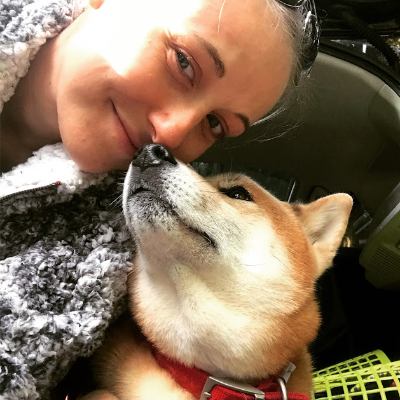
Dr Sarah Louise Galea, SAT2, CUH; Liaison Anaesthesiology Trainee (LAT) for CUH (Photo: Sarah with Red, another Very Good Boy)
- Please tell us about yourself? I trained at Barts in London. I have a psychology degree and worked in an acute mental health unit before starting medical school. I then worked as an EMT during my medical degree, which is how I met my husband. We’ve lived in the UK, Malta, and now Ireland. We have a five-year-old dog- a Shiba Inu called Red- who is the undefeated best boy.
- What, or even who, lead you to choose anaesthesia as a career? I didn’t choose medicine until I was a bit older, and the same goes with Anaesthesia. I suppose I enjoyed lots of areas of medicine and surgery, and I thought it would be difficult to pick one to pursue for decades. We didn’t get much exposure to anaesthetics at Barts, only two weeks in final year, and so even then I wasn’t that taken with it. However, through my FY1 and FY2 years, I never met an anaesthetist who wasn’t patient and kind, and they all just seemed pretty happy in their work. I realised then how many different specialities they were involved in and I thought I would give it a go. I started training in Malta before we moved to Ireland and haven’t looked back since.
- If you were to choose another medical specialty, what would it be? Haematology. I did a total of six months of haem-oncology and palliative care during my FY1 and FY2 years and loved every second. It has multi-system diseases even within the one specialty, and haematology patients are often the sickest patients outside of ICU. They deteriorate quickly, need careful investigation, and often have difficult access with complex treatments. Many of them are young people, who will achieve remission with the right management. For those with a terminal diagnosis, you can give them choices when they feel they have none. It’s fascinating and very rewarding.
- What book or film would you recommend to a young doctor? It’s not a book or film, but I still maintain that Scrubs is the closest portrayal of daily life as a doctor. Forget House or Grey’s Anatomy, things are much sillier in medicine than these shows would have you think. I would love to be considered as Elliot Reid, but I am much more like Perry Cox in real life. In terms of books, everyone should read Black Box Thinking by Matthew Syed, Why We Sleep by Matthew Walker, and Lifespan by David Sinclair. They all have their connection to medicine, but can help all of us live better, longer, fuller lives.
- Tell us something surprising about yourself? This is a really hard question! In medicine, we can sometimes allow it to be all-consuming, and our identities merge with our work. However, I am passionate about budgeting and finance, and am self-taught about ethical exchange-traded funds (ETFs; long-term investments), compound interest, and the Financial Independence / Retire Early (FI/RE) movement. Other than that, I am a Ricardian (someone who believes that Richard III was maligned by the Tudors and Shakespeare, and was a much better human being than history would allow us to think), and I did once drag my now husband about 40 miles out of our way on a road trip to visit the Richard III museum in Leicester which is built over the car park where they found his skeleton in 2012. He didn’t have a clue who Richard III was and still doesn’t.
- What would be your ideal weekend or holiday?My ideal weekend is, at the moment, any weekend which doesn’t involve work! I suppose if I had no time or budget restrictions, I would be somewhere hot, with a cocktail in hand, reading my book and listening to the waves roll in. A bit of spa time wouldn’t be horrendous. With a big bowl of noodles for dinner. There isn’t a day of my life I don’t want noodles.
- What advice would you give someone starting Anaesthesia as a career? I don’t want to rattle off a list of cliches here. Everybody usually says “concentrate on the basics”, “do the reading”, “take breaks” etc etc, but really I think you just have to make sure that it’s the career for you. Thankfully, many of the skills we learn early on will serve people well in other specialties, but you have to be happy. If work ever becomes something not worth getting out of bed for, it’s time to take a step back and revaluate. Is this a temporary feeling, can it be made better? It can be hard to admit something you thought you wanted is no longer what you wish to do, but if there is another passion in life you would be better suited to, you’re not fulfilling your potential. Anaesthesia is one of those careers that is quite hard to access, it’s pretty removed from many other areas of medicine, and so when you start it’s easy to get swept up in it. I would rather work with happy colleagues who do their utmost for patients than people who are miserable in their work.
- If you could go back five or ten years and give yourself advice, what would it be? I was a different person even two years ago, let alone five or ten! The people in your life who you think are impressive and role models are probably just as clueless as you, and asking questions is no bad thing. There’s not a magic age when you suddenly have your life together.
- Who would be your ideal dinner guest? Malcolm Gladwell would be a never-ending source of interesting conversation over (obviously) noodles. His career of writing non-fiction books involving the unexpected implications of study in the social sciences and history, writing for the New Yorker, podcasting, and a previous life as a competitive runner would leave me not short of questions!
- What ability, gift, or even superpower, would you most like to have? I would love to be someone who is always calm under pressure. That, to me, is the ultimate superpower.
- Favourite dinosaur? Spirit animal? There’s a dinosaur called the Irritator. It speaks to me, and people who have worked with me will get it. My spirit animal is obviously the three-toed sloth. Anything that moves so slowly that plant life grows on it is alright in my book.
Thank you!!!!
Editor’s note (OH): The Irritator is my new favourite dinosaur! It is a type of Spinosaurus- they were the biggest land carnivores ever to exist. Big units. The movie Jurassic Park III featured an epic battle between a Spinosaurus and a T. rex- the Spinosaurus won- an outcome contested by many dino-nerds since. Very few Spinosaurus fossils exist, and the best-preserved skull ever found was “improved” by a commercial fossil collector who stuck a bit of the back of the skull to the tip of the snout with car body filler. This was only noticed when the skull arrived at Germany’s Stuttgart State Museum and the “improvements” then had to be painstakingly scraped away. The fossil was appropriately named “Irritator” to reflect the resulting irritation experienced by these palaeontologists.
It sounds like the perfect spirit animal for anaesthetists who are struggling with a particularly stubborn naso-gastric tube while under the drapes!
I is for Irritator | Science | Smithsonian Magazine
Academic’ Departmental updates:
We wish to acknowledge the ingenuity and enthusiasm of the organisers and participants who manged to keep various educational meetings, teaching and research programs up and running throughout the year, despite the challenges.
UCC ASSERT CAST Program: on behalf of the core faculty of the UCC College of Anaesthesiologists Simulation Program, I would like to thank the ASSERT staff, the faculty and the participants who contributed to the success of the courses held in 2021. If anyone is interested in becoming part of our teaching faculty in 2022, please contact Dr Oonagh Hickey, Consultant Anaesthesiologist, CUH.
Association of Anaesthetists Association Awards: we would like congratulate Dr Murray Connolly, Research Fellow, CUH, on being awarded an Association of Anaesthetists Association Award, in recognition of his role in the Association Trainee Committee from 2019-2021. His roles included liaising between the College of Anaesthesiologists of Ireland Committee of Anaesthesiology Trainees (CAT) and the Association of Anaesthetists Trainee Committee, editorial assistant for Anaesthesia News, and contributor and editor of the AAGBI’s Trainee Handbook.
Association of Anaesthetists Winter Scientific Meeting: a randomised control trial undertaken at the CUH titled “A comparison of hip flexor motor function and analgesia associated with i. pericapsular nerve group blockade and ii. femoral nerve blockade, for patients undergoing neck of femur fracture surgery” has been shortlisted for poster discussion in the original research category at the Association of Anaesthetists Winter Scientific Meeting. We wish to congratulate the authors Dr Aogán O Muircheartaigh (Research Fellow, CUH), Dr Márton Deli (Research Fellow, CUH), Dr Brian O’Donnell and Professor George Shorten. The research team wish to sincerely thank all their anaesthesiology colleagues who assisted with data collection.
Artificial intelligence and perioperative outcomes: Dr Barry Kelly, Consultant Anaesthesiologist, CUH, in an Editorial for Perioperative Medicine has outlined how Artificial Intelligence might be used to predict outcome after perioperative acute kidney injury, This clearly points the way for exciting new work that Barry and others are undertaking.
Kelly BJ, Chevarria J, O'Sullivan B, Shorten G. The potential for artificial intelligence to predict clinical outcomes in patients who have acquired acute kidney injury during the perioperative period. Perioper Med (Lond). 2021 Dec 15;10(1):49. doi: 10.1186/s13741-021-00219-y. PMID: 34906249.
CUH Anaesthesiology DIT Award December 2021: this is always a difficult decision, and it is acknowledged that the CUH Anaesthesiology Doctors in Training rose to the challenges posed to them this year with professionalism, dedication, and positive attitude. The prize was awarded jointly to Dr Gilly de Loughry and Dr Ciaran Doherty.
Social activites:
CUH Anaesthesiology Department Christmas Party:
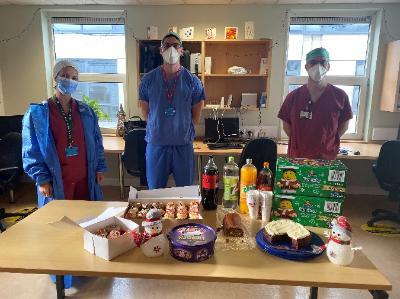
On 15th December, the CUH Anaesthesiology Department held a socially distanced social gathering to mark the end of the year. It was also an opportunity to congratulate Dr Sarah Ryan on completing her training. We also wished Dr Una Casey all the best when she travels to Melbourne with baby Auróra and husband, Dr Márton Deli, who is starting a paediatric ICU fellowship. Una baked a rather sinful red velvet cake and a walnut beigli (a traditional Hungarian Christmas pastry). Cupcakes from the Cupcake Cottage, savoury snacks, and the traditional bottle of Tanora (a Cork speciality) were also provided. Tins of chocolates were distributed to our theatre colleagues, nurses and midwives in the Delivery Suite, and the nursing staff of the General, Cardiac and COVID Intensive Care Units as a token of our appreciation of the teamwork throughout the year.
CUH Anaesthesia Department Baby Photo Competition:
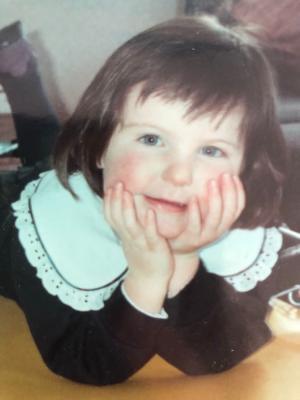
Dr Gilly de Loughry (photo) co-ordinated our second annual Baby Photo Competition. Photos of 25 adorable babies and toddlers, spanning many decades, were submitted. A tin of chocolates was awarded to Dr Jalal Ahmad who guessed the most correctly.
The Canova Casts:
The Crawford Art Gallery is an oasis of history, culture and wonder in the centre of Cork City. The first collection of exhibits that the visitor encounters is the Canova Casts. They were made by Italian sculptor Antonia Canova (1757-1822) and are plaster casts of original sculptures. At a time when most people were unable to travel, plaster casts were a way of introducing art and culture to communities. However, given the delicate nature of plaster casts, it is unusual to find so many still in such good condition. The story of how the Canova Casts ended up in Cork is an intriguing one of political ambition, battles lost and won, and a drunken headmaster.
When the French King, Louis XV1, was executed by guillotine in 1793 during the French Revolution, the path was clear for a brilliant young army officer from Corsica to pursue his ambition to exert his control over France, Europe and beyond. In 1805, Napoleon Bonaparte declared himself Emperor of France. He was particularly keen to curb the authority of the Pope (the head of the Catholic Church) over French Catholics. Twice Napoleon invaded the Vatican City in Rome and twice the resident pope was taken to France as a prisoner- Pope Pius V1 (who died while captive) and Pope Pius V11. Napoleon also instructed that treasures kept in the Vatican City, including many ancient Roman sculptures, were to be transported to France. When British forces defeated Napoleon at the Battle of Waterloo in 1815, bringing the Napoleonic era to an end, Pope Pius V11 instructed Canova to oversee the return of these treasures back to Rome. He also commissioned Canova to create the Canova Casts as a gift to the British Prince Regent (the future King George 1V) in gratitude. Over 200 plaster casts were made of sculptures in the collection.
However, when the plaster casts arrived in London, no-one seemed to know where to put them. They initially remained in the custom house before being moved to a garden pavilion at the prince’s London residence. Eventually, Viscount William Hare (president of the Cork Society for Promoting the Fine Arts) asked if they could be transported to Cork- then a busy maritime and trading port of the British Empire. In November 1818, the Canova Casts arrived in Cork.
The Canova Casts were initially displayed in the Apollo Theatre on Patrick Street, before being moved to the old custom house (now the Crawford Art Gallery) in 1832. To spare the blushes of the Corkonians, fig leaves were strategically placed on some of the statues. These were removed in 2019 as part of The Fig Reveal exhibition. One cast is of “Laocoon and his sons” wrestling with serpents (photo). The original sculpture once graced the palace of Roman Emperor Titus and it was rediscovered in 1506 with much ceremony. The seated lady (photo) is a cast of an original sculpture by Canova of the Goddess of Harmony, who’s face may be based on that of Napoleon’s second wife. A cast of a Canova sculpture of Napoleon’s mother is also included in the collection.
The arrival of the casts in Cork stimulated the creation of the Cork School of Art. One of the headmasters was fired after destroying some of the casts in a drunken rage. The casts were an invaluable resource for students of the school of art, including John Hogan, a famous Cork sculpture. Hogan’s “Minerva” is exhibited in the gallery with the Canova Casts (the bronze-coloured figure with the spear). Also present is Hogan’s “The Drunken Faun”, created as a challenge when a colleague told him that all the classical sculpture poses had already been used. Behind the reclining faun is Hogan’s more dignified sculpture of William Crawford, of the Beamish and Crawford Brewing dynasty and a founder of the original Cork school of art. His son, William Horatio Crawford, funded an expansion of the building, including the gallery where the Canova Casts are currently displayed. In 1885, the renamed Crawford Municipal School of Art was formally opened by the Prince of Wales (later King Edward V11). In 2019, the Canova Casts were given a 200th birthday makeover- including the removal of the previously mentioned fig leaves- and the Recasting Canova exhibition was unveiled. The Recasting Canova booklet attached below is worth a browse if interested.
Admission is free but donations are welcome.
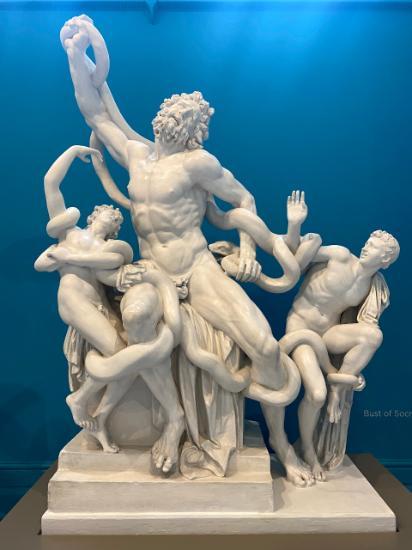
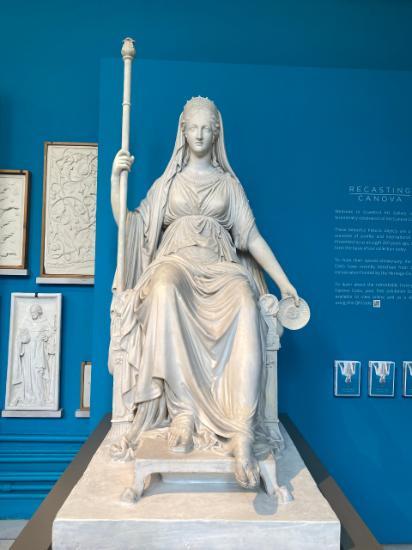
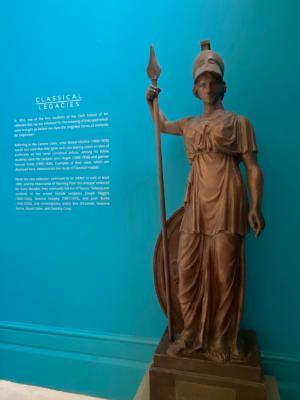
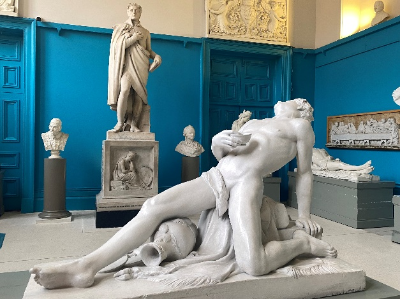
Recasting Canova - Crawford Art Gallery
CRAWFORD-ART-GALLERY-–-RECASTING-CANOVA-second-edition-SR.pdf (crawfordartgallery.ie)
The Fig Reveal - Crawford Art Gallery
These are the hands:
By Michael Rosen
Michael Rosen is a British author and poet, and many parents will be familiar with the children’s poem “We’re going on a bear hunt”. In March 2020 he spent 47 days in ICU as a result of COVID infection. He wrote this poem in 2008 in celebration of the 60th anniversary of the NHS, and it seems like a fitting tribute to all healthcare and other frontline workers who have risen to the challenge of the ongoing pandemic.
These are the hands
That touch us first
Feel your head
Find the pulse
And make your bed.
These are the hands
That tap your back
Test the skin
Hold your arm
Wheel the bin
Change the bulb
Fix the drip
Pour the jug
Replace your hip.
These are the hands
That fill the bath
Mop the floor
Flick the switch
Soothe the sore
Burn the swabs
Give us a jab
Throw out sharps
Design the lab.
And these are the hands
That stop the leaks
Empty the pan
Wipe the pipes
Carry the can
Clamp the veins
Make the cast
Log the dose
And touch us last.
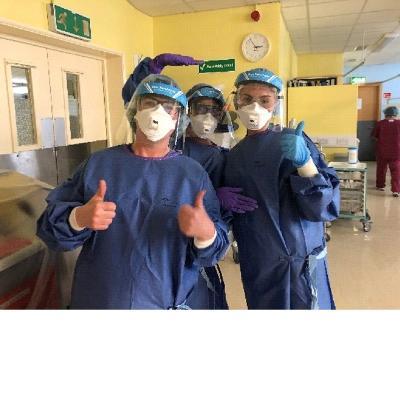
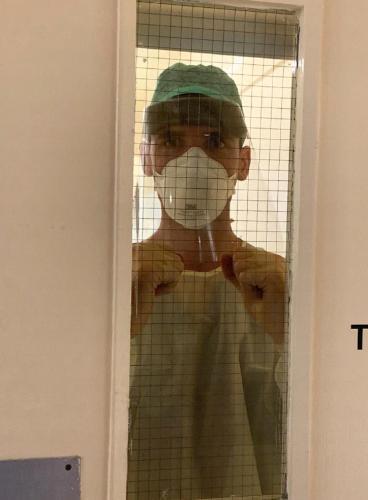
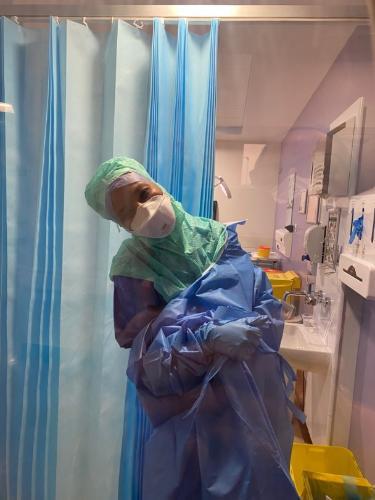
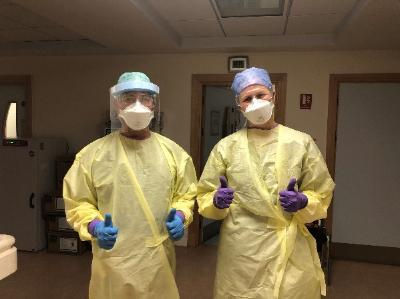
Editors:
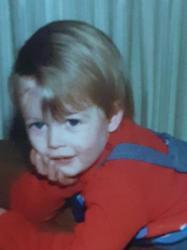
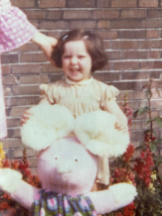
Dr Eoin O’Rathallaigh, SpR, CUH (red jumper)
Dr Oonagh Hickey, Consultant Anaesthesiologist, CUH (I still have the pink mouse)
